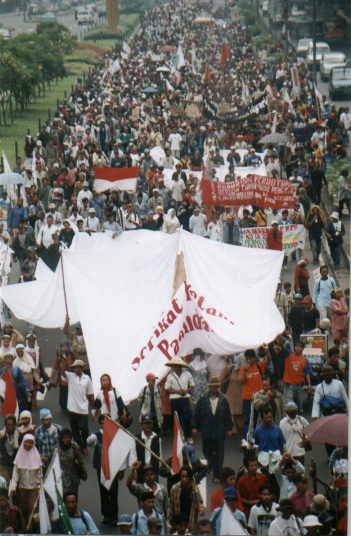Rural social movements have a rich history in Indonesia, and they have recorded significant achievements in recent years
Dianto Bachriadi
 |
Peasants march in Jakarta, 2006, to demand agrarian reform.Dianto Bachriadi |
Jakarta, 1953: DN Aidit, one of the young and rising stars of the Indonesian Communist Party (PKI) launches his analysis of Indonesian agrarian society. He says agrarian revolution must be the essence of the people’s ‘democratic revolution’ in Indonesia. At the fifth party congress a year later, the PKI adopts Aidit’s analysis as the core of it new agrarian program. The program calls on the party to build mass power in rural areas, and to make the struggle for land reform central to its appeal, using the slogan ‘land to the peasants’.
Twelve years later, Aidit is dead and the PKI is in tatters. A wave of killing has swept through rural parts of Indonesia, with the military and its allies targeting many of the cadres and activists who had been at the forefront of the PKI’s struggle for land reform. The New Order regime which comes to power, with the military at its core, sets in train a series of policies that aim to depoliticise the countryside, permanently eliminate the left, and proscribe independent organisation of the peasantry.
Yet the repression of 1965-66, despite the intentions of Suharto and his comrades, did not negate the centrality of agrarian problems to Indonesian political life. Nor did it stamp











